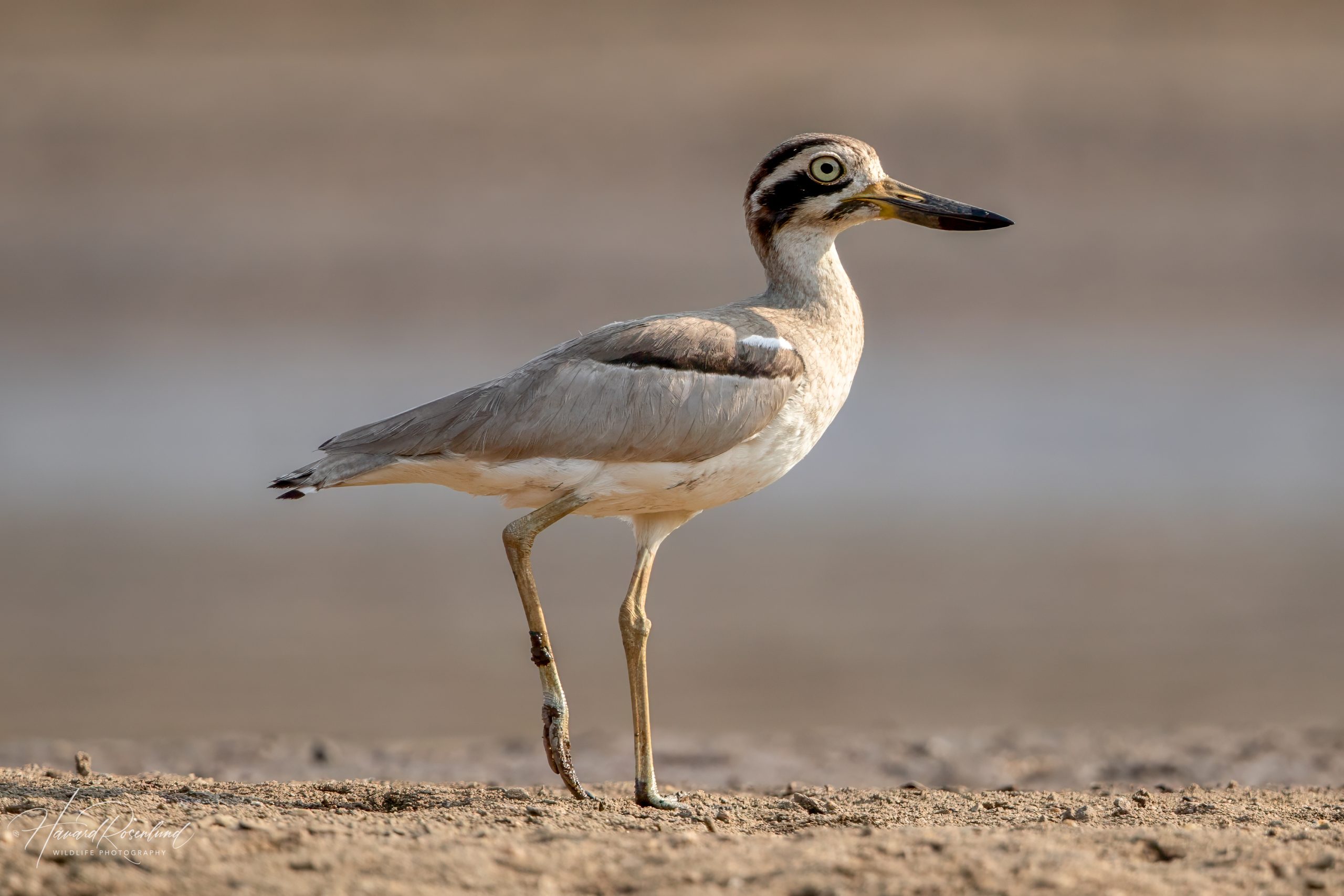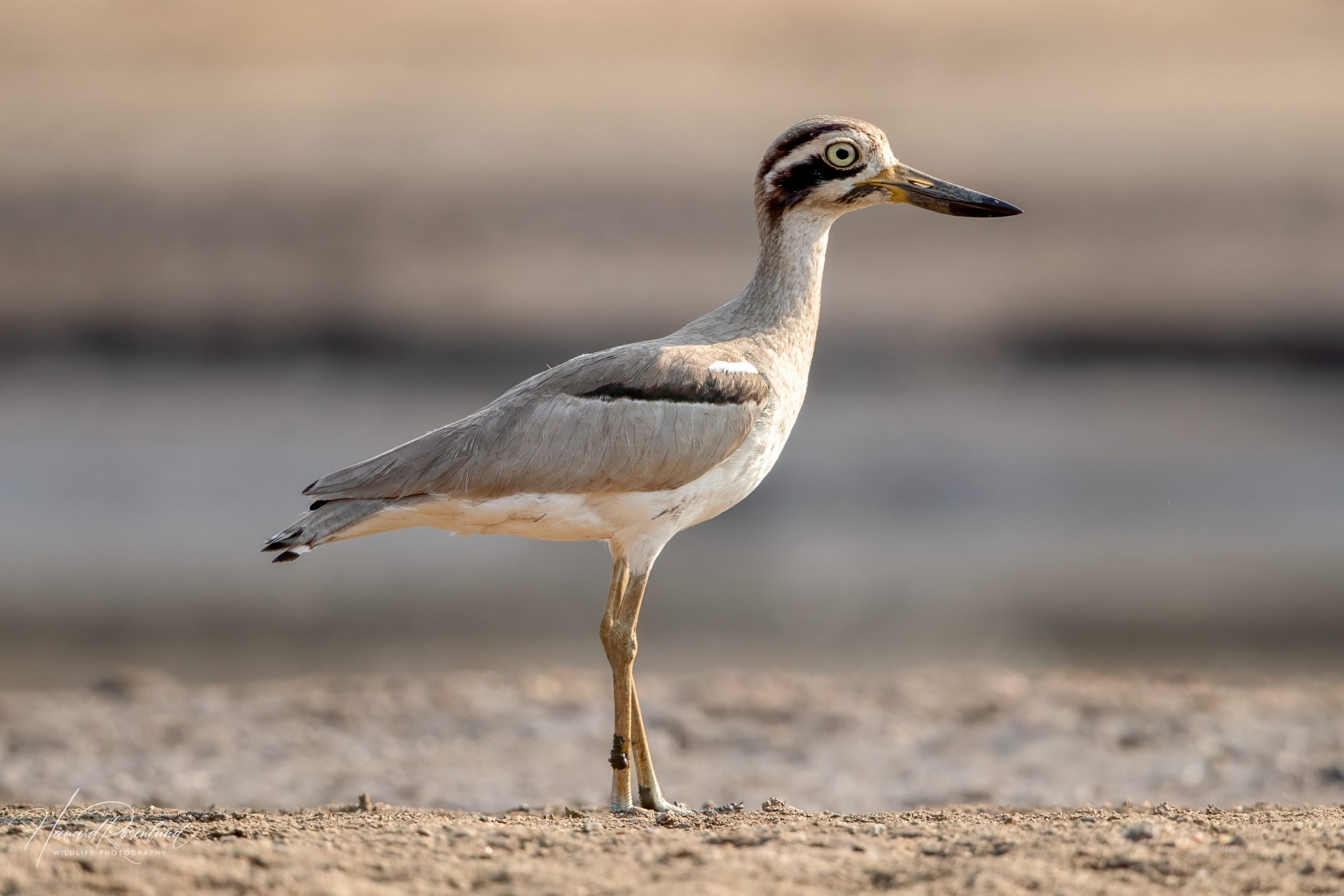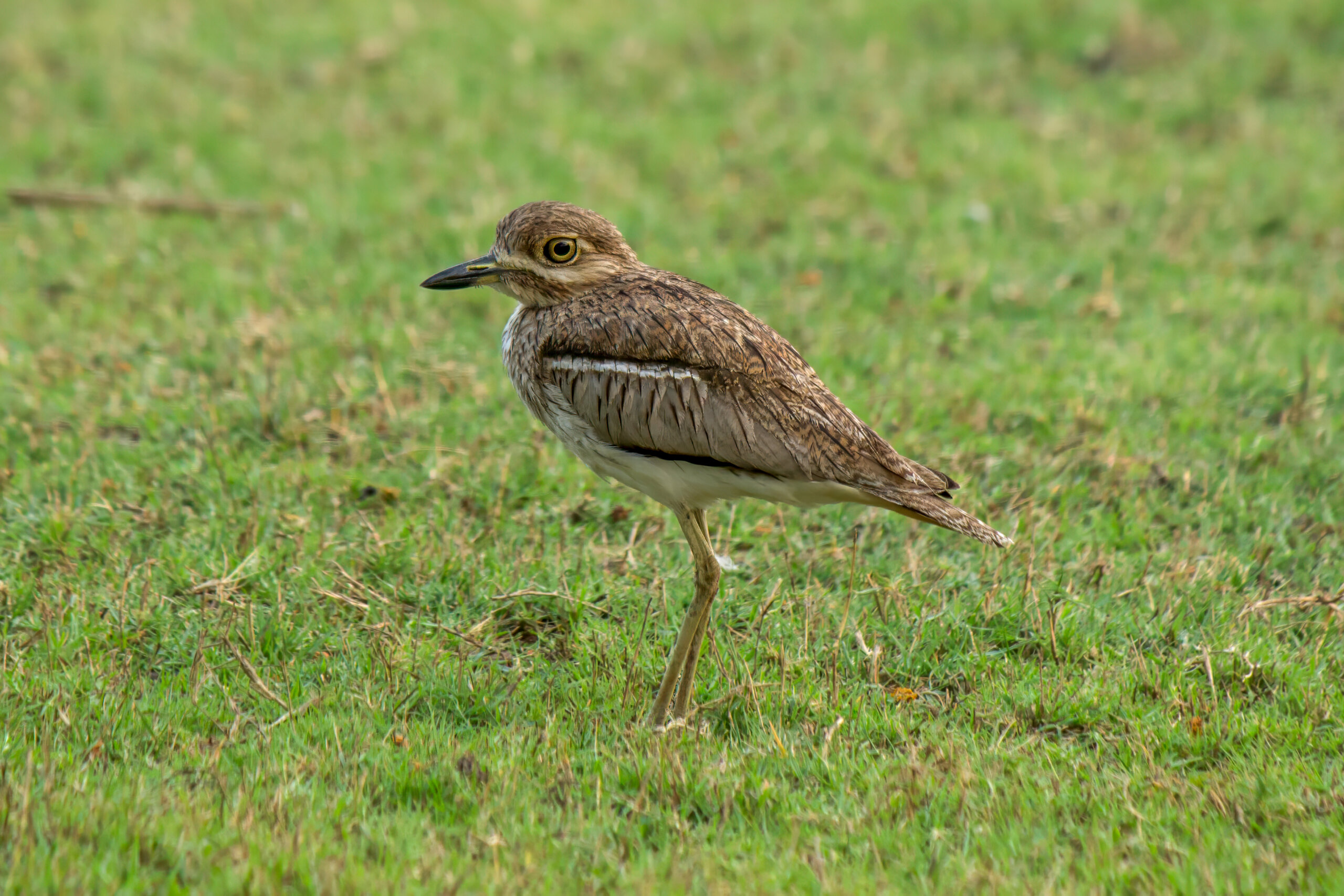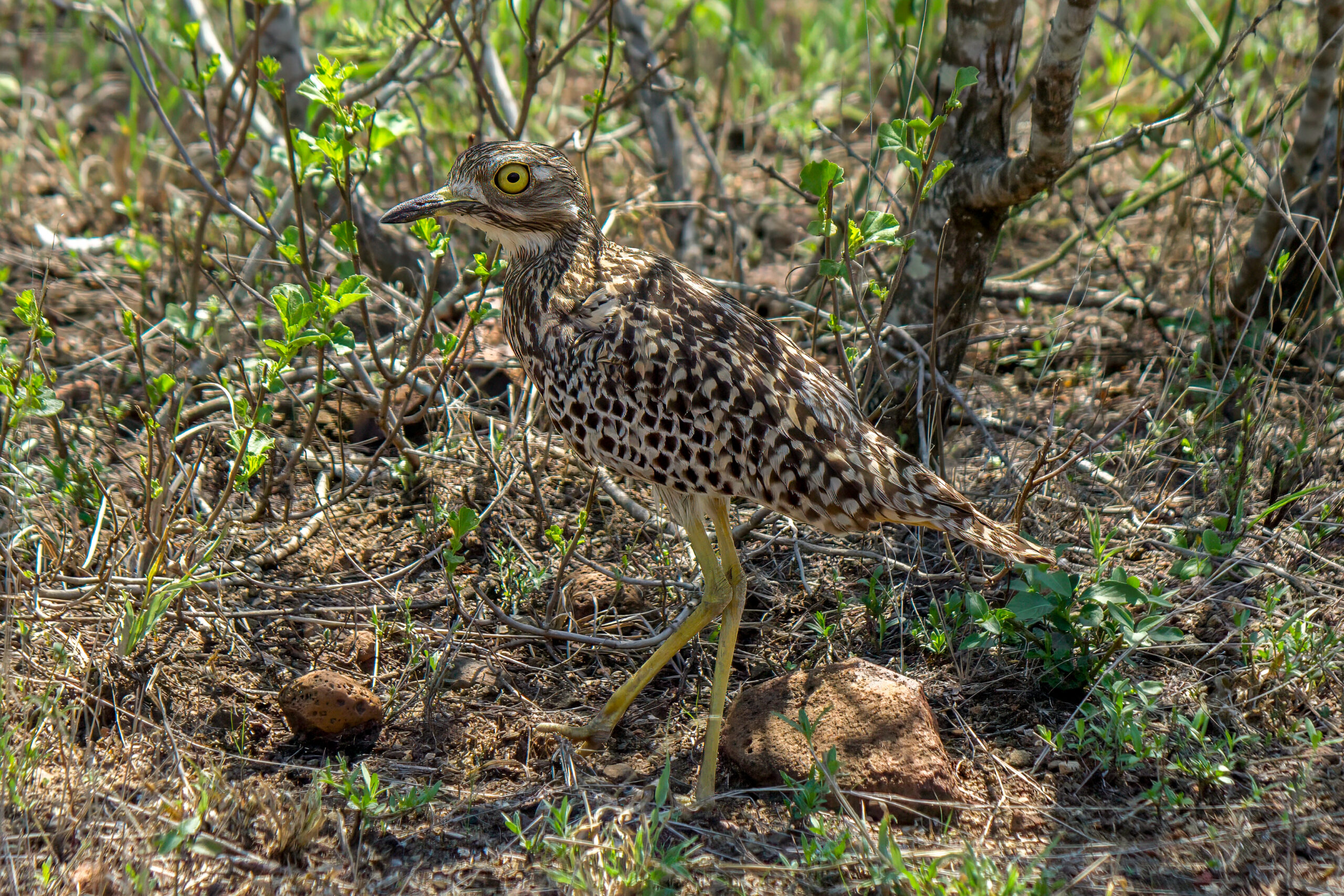Description
The great thick-knee (Esacus recurvirostris) is a large shorebird known for its unique appearance and distinctive features. It is distributed across South Asia, including parts of India, Pakistan, Nepal, Sri Lanka, and Southeast Asia, extending to Myanmar and Thailand. This species measures approximately 49 to 54 cm (19-21 in) in length, with a wingspan ranging between 90 to 100 cm (35-39 in). The bird has a robust body, large head, and a notably thick, pale-yellow and black bill with a slight upward curve. Its plumage is predominantly greyish-brown with a white belly, and it has prominent white wing bars visible in flight. The legs are long and yellow, perfectly adapted for its wading lifestyle.
The great thick-knee is similar in appearance to the beach thick-knee (Esacus magnirostris), found further south in Southeast Asia towards Australia. The great thick-knee is slightly smaller in size, has lighter plumage, and a slightly slimmer bill than the beach thick-knee. Additionally, the great thick-knee’s range is more inland and along large riverbanks, whereas the beach thick-knee is typically found on coastal beaches and islands.
Diet & habitat
The great thick-knee inhabits a variety of wetland habitats, primarily favoring sandy or pebbly shores of rivers and large lakes. It is also found in dry riverbeds and occasionally in coastal regions, although it typically avoids the true marine habitats favored by the beach thick-knee.
Its diet consists mainly of crustaceans, mollusks, insects, and small fish. The bird forages by walking slowly along the water’s edge, using its keen eyesight to spot prey. It often picks food from the surface or probes into the sand or mud with its stout bill. The great thick-knee is known to be a patient hunter, often standing still for long periods before making a quick lunge at its prey.
Behavior
The great thick-knee is generally solitary or in pairs, though it may sometimes be seen in small groups. It is predominantly nocturnal or crepuscular, meaning it is most active during twilight or nighttime hours, especially when foraging. During the day, the bird is often found resting in the shade or on the ground, relying on its cryptic coloration to avoid predators.
This species is known for its distinctive curlew-like calls, which are loud and haunting, typically heard at dusk or during the night. These calls are believed to play a role in maintaining territory and in communication between mates.
Nesting
The breeding season for the great thick-knee varies depending on its geographical location but generally occurs during the dry season when water levels are lower, exposing more nesting sites. In India, the breeding season typically spans from February to July.
The bird’s nesting behavior is unique; it lays its eggs directly on the ground, usually on gravelly or sandy substrates near water bodies. The nest itself is a simple scrape in the ground, often with minimal lining. The clutch size is usually one or two eggs, which are well-camouflaged with their surroundings, helping to avoid predation.
Both parents share the responsibility of incubating the eggs, which lasts about 28 to 30 days. Once hatched, the chicks are precocial, meaning they are relatively mature and mobile from birth. They leave the nest shortly after hatching but remain under the parents’ protection until they are capable of fending for themselves, which usually takes several weeks.
Status
The great thick-knee is currently listed as near threatened on the IUCN Red List due to habitat loss and degradation, particularly from dam construction, water pollution, and human disturbance along rivers and lakes. The conversion of wetlands for agriculture and other land uses has also contributed to the decline in suitable habitats. Despite these challenges, the great thick-knee still maintains a wide range, but its population is decreasing. Conservation efforts are focused on protecting wetland habitats and reducing human-induced disturbances to ensure the survival of this species.









